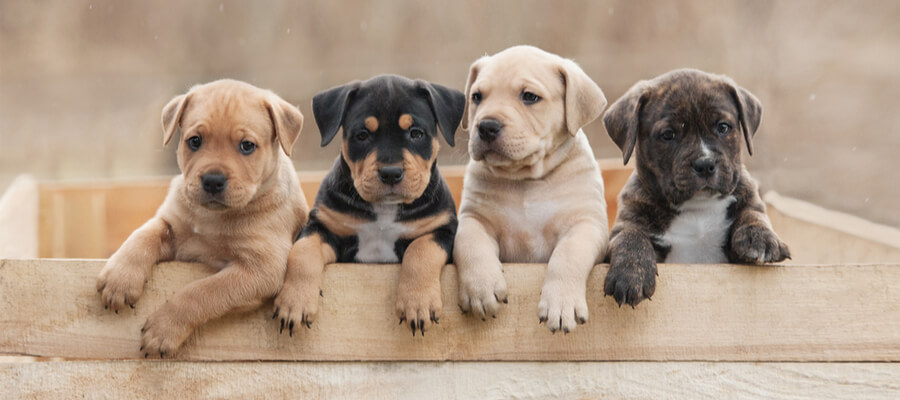Last month, a case of Parvo made local headlines when a litter of puppies being sold in the Cabela’s parking lot was found to be infected and then sold to unsuspecting patrons. This outbreak led to the company to a ban on selling puppies at the popular location; but more importantly, people wanted to know how and why this happened.
What is Parvo
Parvo, also known as canine parvovirus (CPV2), is a highly contagious virus that causes an infectious gastrointestinal (GI) illness in puppies and young dogs that can be deadly. It initially was discovered in 1977 and is a global problem, not just here in the U.S.
Breeds That Are More Susceptible
Scientist’s do not know why some breeds are more susceptible to Parvo than others. Here is a list of the more popular breeds that are hit harder with Parvo:
- German Shepherds
- Rottweilers
- Doberman Pinschers
- English Springer Spaniels
- American Staffordshire Terriers
How Does Parvo Spread
What makes this disease so dangerous is how easily it is spread from canine to canine. It can be spread two different ways:
- Through direct contact with an infected dog or with infected dog feces. Since those furry family members of ours inspect and learn about their environment through sniffing and licking, it’s easy to see how they can get infected anywhere an infected dog has been.
- Through indirect contact via environments infected dogs have been in and items they’ve had contact with. Parvo can survive on food bowls, leashes, kennels, skin, clothes, etc. for a long time as it is resistant to heat, cold, humidity, and dry environments.
What makes this disease so dangerous is how easily it is spread from canine to canine. A dog that is infected with Parvo can start spreading the virus four-to-five days after being exposed, even before a dog starts exhibiting symptoms of the infection. The dog will continue to spread the virus while he is sick and for up to 10 days after recovery.
It's important to remember that a dog getting Parvo has nothing to do with a particular environment, store, etc. Parvo is in all environments such as parks, lawns, parking lots- any place animals visit. That is why it is so important to get your canine vaccinated on time.
Preventing Parvo
The best news is that Parvo is a preventable disease with proper vaccination protocols, plain and simple.
If you are getting a puppy from a breeder or private party, it’s important to ask if the mother was properly vaccinated before her pregnancy, so the puppies are born with some maternal immunity. This immunity wears off around 6-8 weeks. Puppies should not go out in public until their second vaccine, which is at 12 weeks. Anything before that will put your precious fur ball in danger.
Ask for proof of all vaccinations your puppy has had. A puppy’s first Parvo vaccination will be during their first appointment, usually around 6 to 8 weeks. All reputable veterinarian offices will provide proof of vaccines upon request.
If you need to make an appointment for your pooch to update vaccinations, please feel free to request an appointment at either of our locations!
